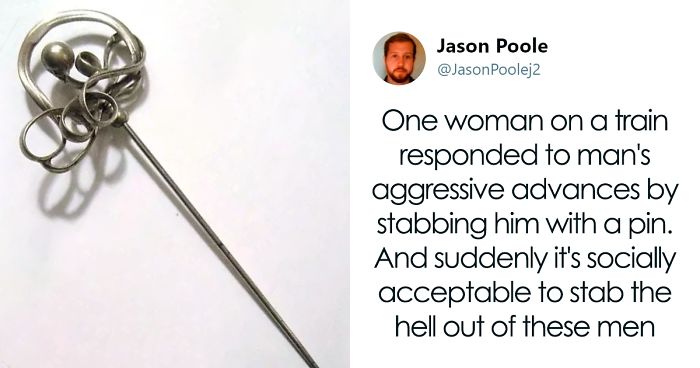
20th-Century Women Protected Themselves From Sexual Predators With Hatpins And Men Tried To Ban Them
Unescorted city women of the early 1900s didn’t have things like pepper spray to defend themselves from sexual predators. But they were crafty. Let’s take Leoti Blaker, for example. The young Kansan was touring New York City when she boarded a Fifth Avenue stagecoach at 23rd Street and settled in for the ride. The coach was crowded and as it was bumping along the road, Blaker noticed a man getting closer and closer to her. He was an elderly, elegantly dressed, and “benevolent-looking” man. Suddenly, the stage jumped, tossing its passengers all over the place and the man got so close to Leoti, he started touching her, hip to hip, shoulder to shoulder. It was then that he lifted his arm and draped it low across her back. But Leoti was ready. She reached for her hatpin (which was almost a foot long) and plunged it into the man’s arm. He let out a cry of pain and left the coach at the next stop.
“He was such a nice-looking, old gentleman. I was sorry to hurt him,” the badass woman told the New York World. “I’ve heard about Broadway mashers and ‘L’ mashers, but I didn’t know Fifth Avenue had a particular brand of its own… If New York women will tolerate mashing, Kansas girls will not.”
Newspapers all over the country began reporting similar encounters with “mashers,” period slang for predatory men. Recently, Twitter user Jason Poole got his hands on this interesting piece of self-defense history and decided to share it with his followers.
As women gained independence and started walking and traveling alone during the late 1800s and early 1900s, hatpins provided a quick line of defense from the gropey “masters” who were considered to be “low-down, cowardly cumberers of the earth,” as a 1904 piece in the Los Angeles Herald put it. “Any woman with courage and a hatpin can prove it,” the text continued.
But the hatpin became an enemy of itself. Stories about wounded innocent people — not mashers — emerged. A 19-year-old girl in Scranton playfully thrust her hatpin at her boyfriend, but she fatally pierced his heart. A young New Yorker felt a sharp pain behind his ear on a streetcar — an accidental prick from a stranger’s hatpin—and died within a week. Also in New York, a hundred female factory workers, all wielding hatpins, attacked police officers who arrested two of their colleagues for making anarchistic speeches.
Thus, a narrative for the opponents of the hatpin was born. It was dangerous to everyone, even other women. By 1909, the hatpin was considered an international threat with Hamburg and Paris police chiefs considering regulating their length.
In 1910, Chicago’s city council finally set a precedent, debating an ordinance that would ban hatpins longer than nine inches. Any woman caught in violation would not only be arrested but also fined $50 as well. Curious spectators packed the proceedings. “If women care to wear carrots and roosters on their heads, that is a matter for their own concern but when it comes to wearing swords, they must be stopped,” a supporter said. Applause from the men, hisses from the women. Nan Davis, who was there to represent several women’s clubs, asked for permission to address the committee: “If the men of Chicago want to take the hatpins away from us, let them make the streets safe. No man has a right to tell me how I shall dress and what I shall wear.”
Eventually, the furor over hatpins subsided at the onset of World War I. It died entirely when bobbed hair and cloche hats came into fashion when a new menace to society emerged: the flapper. But it would be long before politicians began trying to win women’s votes instead of trying to regulate their wardrobe.
41Kviews
Share on Facebook
 Dark Mode
Dark Mode 

 No fees, cancel anytime
No fees, cancel anytime 






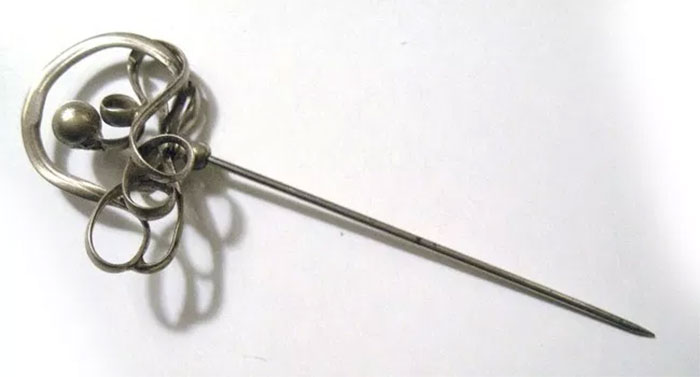







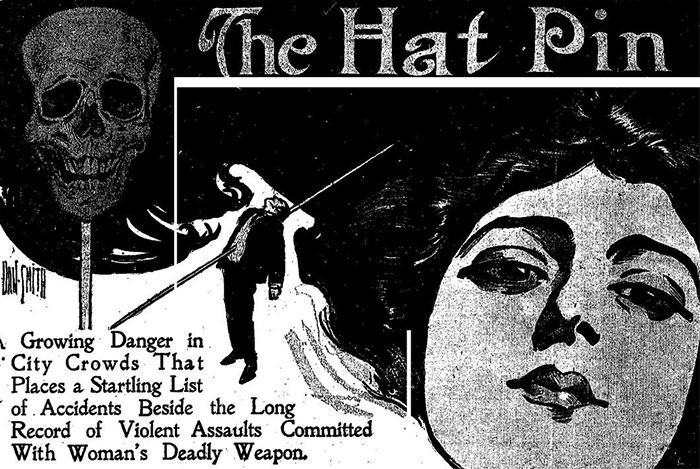

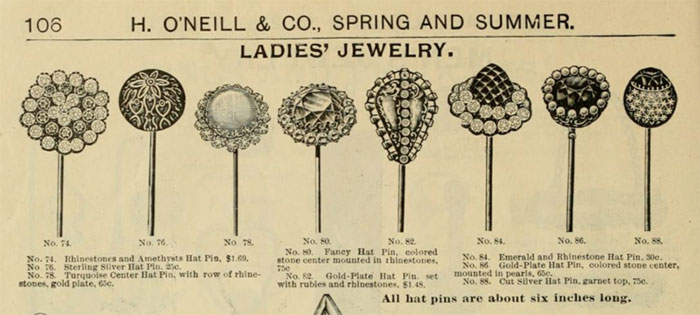



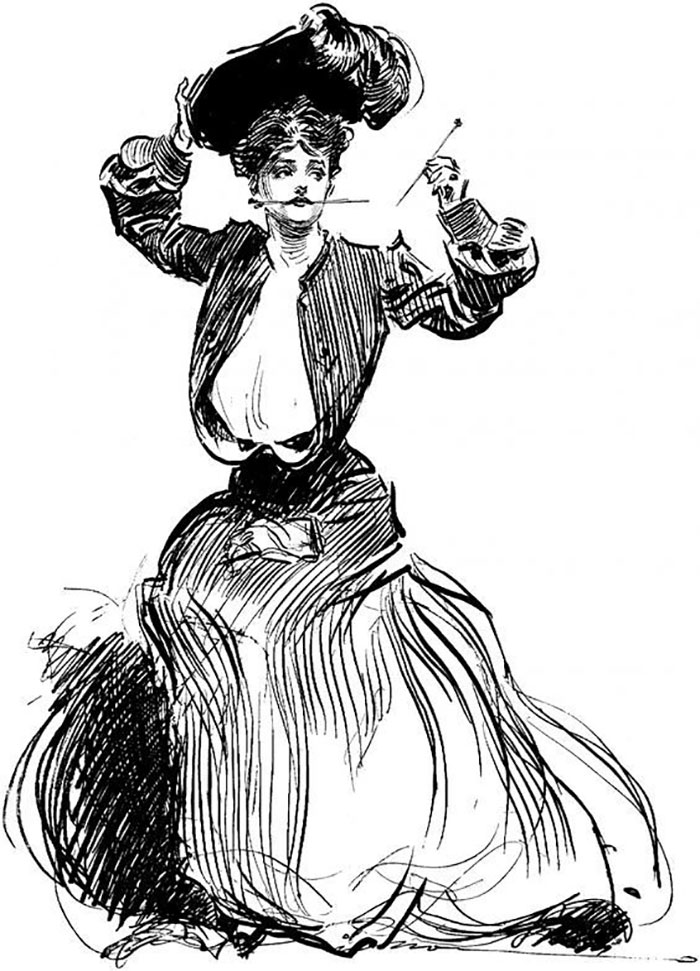



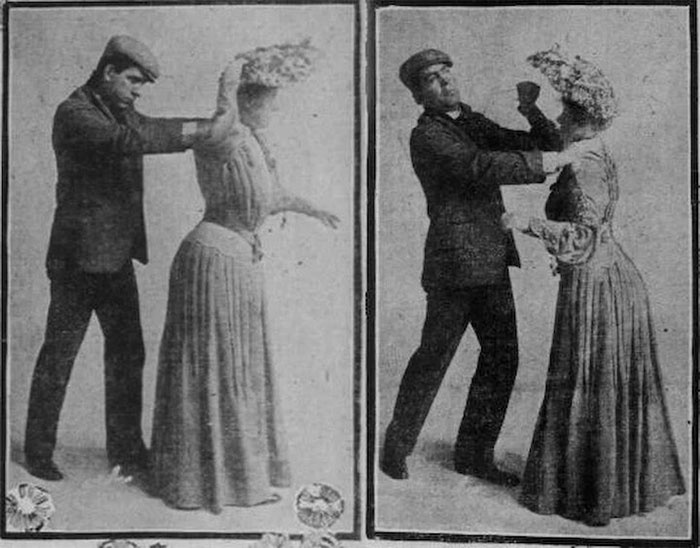













































273
87